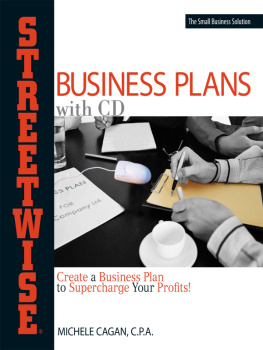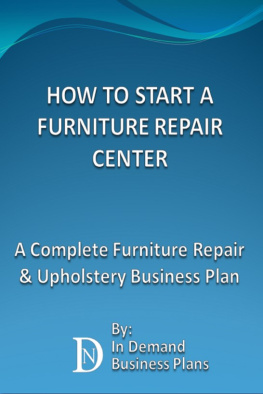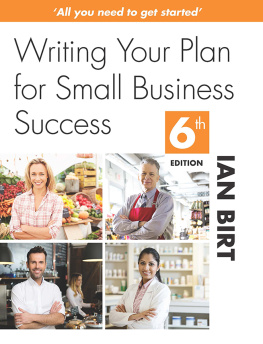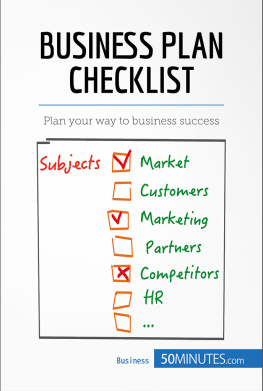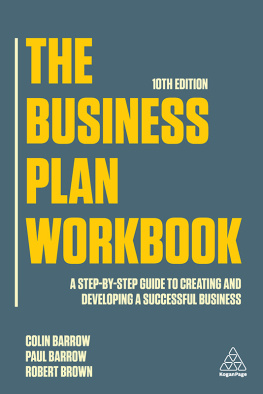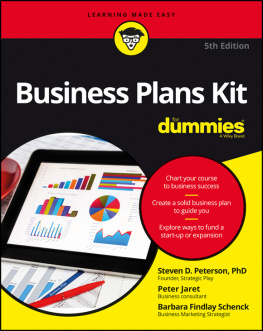APPENDIX A
Deriving Competitive Position
The trouble with the rat race is that even if you win you're still a rat. Lily Tomlin
In this appendix, you will assess how your firm measures up to the competition. You will conclude what your firm's competitive position is, both now and over the next few years. And you will do this assessment for each of your main business segments.
This appendix sets out a systematic way of deriving competitive position, as opposed to the shortcut listing of your firm's strengths and weaknesses discussed in .
You will go through three stages, for each of your firm's main segments:
1. Identify and weight customer purchasing criteria (CPCs): what customers need from their suppliersthat is, you and your competitorsin each segment.
2. Identify and weight key success factors (KSFs): what you and your competitors need to do to satisfy these customer needs and run a successful business.
3. Assess your competitive position: how you rate against those key success factors relative to your competitors.
We'll start, as always, with the customer.
Customer Purchasing Criteria
What do customers in your business's main segments need from you and your competitors? Are they looking for the lowest possible price for a given level of product or service? Or the highest-quality product or service irrespective of price? Or something in between?
Do customers have the same needs in your other business segments? Do some customer groups place greater importance on certain needs?
What exactly do they want in terms of product or service? The highest specifications? Fastest delivery? The most reliable? The best technical backup? The most sympathetic customer service?
Customers foremost needs from their suppliers are called customer purchasing criteria (CPCs). For business-to-business (B2B) companies, CPCs typically include product quality (including features, performance, and reliability), product range, delivery capabilities, technical support, customer service, relationship, reputation, and financial stability. And, of course, price.
For business-to-consumer (B2C) companies, CPCs tend to be similar, although typically with less emphasis on product range and financial stability. Depending on the product or service being offered, the consumer will place varying importance on quality, service, and price.
CPCs can usefully be grouped into six categories. They are customer needs relating to the:
1. Effectiveness of the product or service
2. Efficiency of the service
3. Range of products or services provided
4. Relationship with the producer or service provider
5. Premises (only applicable if the customer needs to visit the service provider's premises)
6. Price of the product or service
These needs can be conveniently remembered, with perhaps a faint suggestion of a cult science fiction movie, as the E2-R2-P2 of customer purchasing criteria.
Let's look briefly at each in turn.
E1: EFFECTIVENESS
The first need of any customer from any product or service is that the job gets done. You, the customer, have specific requirements on the features, performance, and reliability of the product or service you need. You want the job done. Not half-done, not overdone, just done.
You want a crew cut. You as the customer go to the service provider, the barber. He gives you a crew cut. You pay and go home. Job done.
You may have other requirements, like how long it takes him to cut your hair, the interaction you have with the barber, whether he also offers a wet shave, how clean the barbershop is, or how reasonable his price. But the most basic requirement is that he is effective at giving you a crew cut. At getting the job done.
Suppose, however, that it's not a crew cut you want, but the cool cut sported by some movie star. Now you get a bit more demanding. You'll want your barber, or hairstylist, to be competent technically at delivering such a haircut, to know about the pros and cons of upkeep for such a haircut, and to have done a few of these cuts beforeyou don't want to be a guinea pig, not with your hair!
You'll place more importance on job effectiveness.
What constitutes product or service effectiveness for the customers of your business? How important is it to your customers, relative to other purchasing criteria? Is it of high, low, or medium importance?
E2: EFFICIENCY
The second main customer purchasing criterion is efficiency. The customer wants the job done on time.
All customers place some level of importance on efficiency for all types of service. You may not care if your crew cut takes 10, 15, even 30 minutes, but you would care if it took all Saturday afternoon and you missed the big football game.
Different customer groups may place different levels of importance on efficiency for the same service. How much emphasis do your customers place on the efficiency of your service? How important is it relative to other criteria? High, low, medium?
R1: RANGE
Then there is the range of products or services provided. This is an area that customers may find important for some products or services, even most important, and for others it's of no importance at all.
Let's return to the example of a hair salon. No self-respecting hairstylist would offer anything less than haircuts, perms, and colorings. But is that enough? Would customers prefer a salon that can also offer techniques such as hair relaxing, straightening, and braiding? How important to the salon's target customer group is the range of services provided?
At the other extreme lies the functional barbershop. If most customers only want a crew cut, they're going to look for a barbershop that is effective and efficient, and where the barber is a good guy. If the barber were also to offer head massage, big deal! Yet to some customers, the head massage may be the unique offering that draws them through the door.
How important a criterion is product range to your customers? High, low, medium?
R1: RELATIONSHIP
Your barber gives a good crew cut, and he does it quickly. But do you like the guy? Is he the sort of guy you feel comfortable with having his hands on your head? Do you want your barber to chat or stay quiet? How do you want to interrelate? Does it matter to you if he seems bored and disinterested? Or would you prefer him to be interested and enthusiastic?
Never underestimate the relationship component in providing a service. A successful builder knows how to keep the homeowner as content as possible during the work on a new extension. He'll try to ensure minimum disruption to everyday livingno wheelbarrows crossing the living room carpetand he'll be of good cheer at all times. He knows that his business depends on personal referrals. If the stay-at-home spouse tells a neighbor that the contractor is not only a good builder, but an okay guy to have around under trying circumstances, his chances of converting the next sale are greatly improved.
How much emphasis do your customers place on personal relationships? High, low, medium?
P1: PREMISES
This criterion only applies to those businesses, typically services, where the buying decision may be influenced by the environment.


